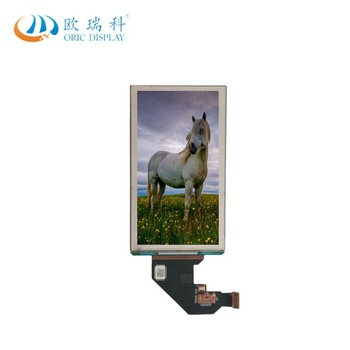Enterprise Name: Shenzhen Oric Electronics Co., Ltd.
Tel: +86-755-85276665
Mobile phone: +86-18924648655
Mailbox: Lisa@oriclcd.com
Fax: 0755-89480065
乐发II500Office Address: 4th floor, Building B, No.48th,
乐发II500Huanguan Middle Road, Guanhu street,
Longhua District, Shenzhen, China 518110
What about the mainstream production technology of OLED LCD display manufacturers

乐发II500First of all, to understand the evaporation technology, we have to start with the structure of OLED. As shown in the figure below, the typical structure is to fabricate a layer of luminescent materials with a thickness of tens of nanometers on ITO glass. ITO transparent electrodes and metal electrodes are used as the anodes and cathode electrodes of the device to add voltage. Under a certain voltage drive, electrons and holes are injected into the electron and hole transport layer from the cathode and anode respectively, and electrons and holes migrate through the electron and hole transport layer to the luminescent layer, respectively. And they meet and recombine in the luminescent layer, forming excitons and exciting luminescent molecules, which emit visible light through radiation relaxation. Radiated light can be observed from the ITO side, and the metal electrode film also acts as a reflective layer.
Of course, as for the whole panel, the structure is much more complex, including the need for isolation column and insulation layer between sub-pixels. AMOLED also has TFT backplanes, which control the switches per pixel.
Simply put, evaporation is the evaporation of evaporated materials into atoms or molecules by means of current heating, electron beam bombardment heating and laser heating in vacuum. They then move in a straight line with a larger free path, collide with the substrate surface and condense to form thin films.
乐发II500The core equipment of OLED panel manufacturing by evaporation technology is evaporation plating machine, which is located in the upstream of panel manufacturing enterprises. The main supplier is Canon Tokki, a Canon Tokki company owned by Canon. With the surge of global OLED market, Tokki has been investing in the development of production capacity, but it is still difficult to meet the needs of customers. It is said that Tokki has only a few plating machines a year. Big customers like LG Display have to lose Apple orders because of the limited number of plating machines.
乐发II500Printing technology
In addition to steaming up the "bulb" of each pixel on the OLED screen, you can also choose to "print" it out. For example, an inkjet printer sprays ink onto paper to present a manuscript or picture. Printing display is an organic material film layer which is made by printing method, and it is a process method. After printing and displaying, different panels can be printed. If "spray" is OLED material, that is OLED panel; and "spray" is quantum dot material, that is, quantum dot display panel. Printed OLED, in short, is precisely deposited in the isolation column trough of ITO glass substrates by multiple printing nozzles on inkjet printing equipment. After volatilization of solvents, a thin layer of about 100 nanometers thick will be formed to form luminous pixels.
乐发II500Why is printing and display technology the next generation of display revolution? Due to the limitation of equipment and technology, vacuum evaporation plating process is difficult to produce large-scale fine metal mask, which makes it impossible to apply this process in the manufacture of large-scale panel. In the process of evaporation, organic material gas is deposited on glass substrates indiscriminately, which leads to low utilization rate of materials. Perhaps because there was no need for vacuum evaporation chambers, precise metal masks, color filters and so on, Panasonic demonstrated at its CES exhibition in 2013 a self-developed "printing" process that, according to themselves, was the world's largest 4K OLED TV (56 inches).